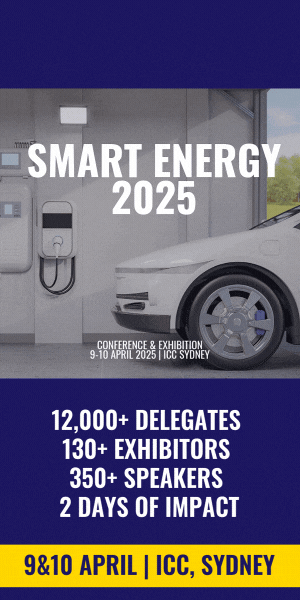The upcoming Smart Energy Expo, returning to Sydney in April, promises to go beyond the buzzwords and showcase practical technology and real-world applications for homes, businesses and fleets. Scott Nargar, Senior Manager of Future Mobility and Government Relations at Hyundai Motor Company Australia, is attending and participating in several panel sessions—one of which will address the industry’s long-anticipated move toward Vehicle-to-Grid (V2G) integration.
Speaking ahead of the event, Nargar emphasised the broad appeal of the expo, calling it relevant for “everyone that wants to try and do their little bit to do something better”—from households installing solar and batteries, to businesses investing in hydrogen and EV infrastructure.
“We’ve been to the event before,” said Nargar. “This year, we’re expecting to see a lot more range and choice for consumers, but also hopefully… price starting to come down” across key smart home and renewable technologies, including solar and energy storage.
Vehicle-to-Grid: Waiting for Retailers and Certification
Nargar confirmed he’ll be speaking on V2G technology—an innovation that allows EVs to return stored energy to the grid during periods of high demand.
“It has been progressing,” he said, pointing to welcome moves by government to support the rollout. “One of the things we are waiting for is the charger side of it to be certified,” along with ensuring “energy retailers are ready to start supporting this.”
He added that choice in V2G-certified chargers is crucial, as competition will drive down costs. But the biggest hurdle may lie with energy retailers themselves.
“The mindset of the energy retailers needs to change,” Nargar said. “If people are selling the energy back to the grid, they’re going to want a reasonable price for it.” With EV batteries increasing in capacity—from 40kWh to over 100kWh—he believes there’s strong potential for EVs to act as “mega batteries,” but only if the compensation model is fair and transparent.
“Certainly people need to be compensated for the energy that’s taken off their vehicles and goes to the grid far more than [what’s paid] for solar today.”
Hydrogen: A Sharper Focus on Real-World Projects
While much of the energy conversation centres around electrification, hydrogen remains firmly on the agenda at this year’s expo—with a full programme dedicated to fuel cell technology.
Hyundai will display a hydrogen fuel cell vehicle, and Nargar revealed the company has also welcomed the arrival of a fuel cell truck to Australia. He confirmed they are working toward a launch later this year.
“We’re seeing more clear air where real feasible projects… are getting more voice today,” he said, contrasting it with the wave of hydrogen projects that have recently been cancelled.
His comments suggest a shift away from speculative projects and toward back-to-base logistics operations that are easier to scale.
“Look at Western Sydney, for example,” said Nargar. “How do we get a fleet of trucks running in logistics hubs… where those high-frequency trucks are running 12 or 24 hours a day and just need to come back to a base, fill up with hydrogen quickly—10 to 15 minutes—and then get back on the road?”
With other manufacturers also trialling hydrogen trucks locally, he welcomed competition across all zero-emission transport options: “We welcome competition, whether it’s EVs, fuel cell cars or fuel cell trucks.”
A Decisive Year for Energy Policy
As Australia approaches a federal election, Nargar believes 2024 will be pivotal for energy and climate policy—regardless of who forms government.
“I think it’s going to be great to see how both sides… prosecute an energy discussion,” he said. “This election will be fought on cost of living and energy. It’s really a discussion for our future.”
He’s optimistic that a clear mandate from voters will finally allow industry and government to make meaningful progress. “Hopefully we can make investments and move on and make sure we have good, reliable, affordable energy for our future generations.”







